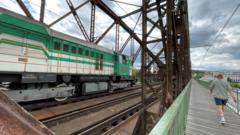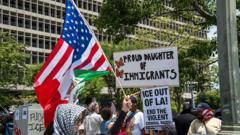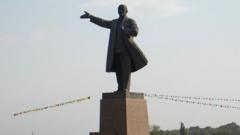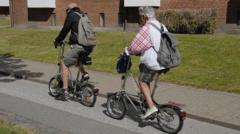In evoking the image of Nella Larsen, a prominent yet enigmatic figure of the Harlem Renaissance, we delve into her formative years spent in Copenhagen—a city that significantly shaped her literary voice. In her novel "Quicksand," the protagonist Helga Crane navigates the same streets that surround us today, drawing a stark contrast to how racial dynamics have evolved over the decades.
Decades after "Quicksand" was published in 1928, the Copenhagen streets that once astounded Helga with curious glances have transformed. Today, a Black individual can stroll through these same locales without drawing undue attention, a testament to the increasing diversity in Denmark. Yet, amid this evolution, many aspects of Copenhagen—its iconic bikes weaving through the urban landscape and its vibrant architecture—remain unchanged, reflecting a continuous thread in the city's character.
Though Larsen's personal experiences in Denmark are seldom chronicled in her own writings, scholars persist in identifying "Quicksand" as a semi-autobiographical work. Research unveiled by biographers and historians has unearthed connections between Larsen and her family in Copenhagen, enriching our understanding of her background. Born to a Danish mother and a father from the Danish West Indies, Larsen's upbringing straddled different worlds in Chicago's segregated society—an experience mirrored in Helga's struggles for acceptance and identity.
Returning to the United States in 1912, Larsen would go on to craft a novel that included vivid portrayals of her beloved Copenhagen. The work received widespread acclaim, lauded by literary figures including W.E.B. DuBois, who praised its courage and thoughtfulness. As we journey through Copenhagen, tracing Larsen's steps, we rediscover not only her legacy but also the enduring complexities of race and identity in a globalized context. In doing so, we invite reflections on both history and the potential futures forged by cultural intersections within urban settings.
Decades after "Quicksand" was published in 1928, the Copenhagen streets that once astounded Helga with curious glances have transformed. Today, a Black individual can stroll through these same locales without drawing undue attention, a testament to the increasing diversity in Denmark. Yet, amid this evolution, many aspects of Copenhagen—its iconic bikes weaving through the urban landscape and its vibrant architecture—remain unchanged, reflecting a continuous thread in the city's character.
Though Larsen's personal experiences in Denmark are seldom chronicled in her own writings, scholars persist in identifying "Quicksand" as a semi-autobiographical work. Research unveiled by biographers and historians has unearthed connections between Larsen and her family in Copenhagen, enriching our understanding of her background. Born to a Danish mother and a father from the Danish West Indies, Larsen's upbringing straddled different worlds in Chicago's segregated society—an experience mirrored in Helga's struggles for acceptance and identity.
Returning to the United States in 1912, Larsen would go on to craft a novel that included vivid portrayals of her beloved Copenhagen. The work received widespread acclaim, lauded by literary figures including W.E.B. DuBois, who praised its courage and thoughtfulness. As we journey through Copenhagen, tracing Larsen's steps, we rediscover not only her legacy but also the enduring complexities of race and identity in a globalized context. In doing so, we invite reflections on both history and the potential futures forged by cultural intersections within urban settings.






















